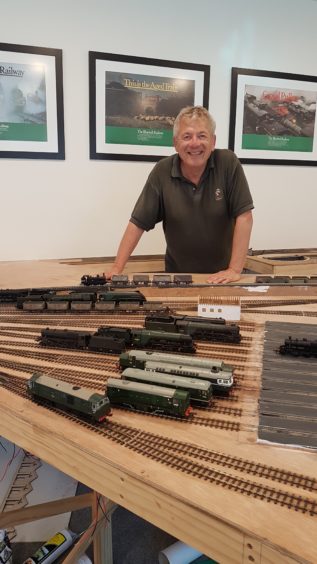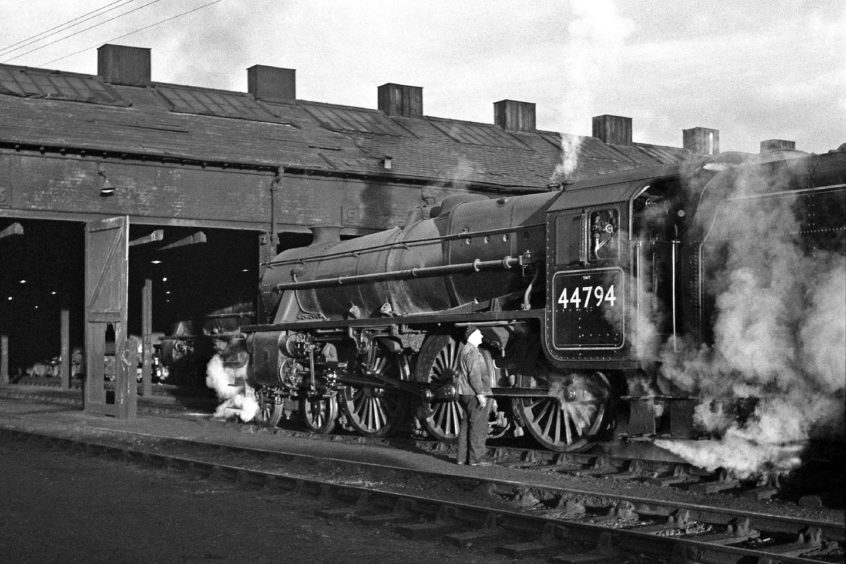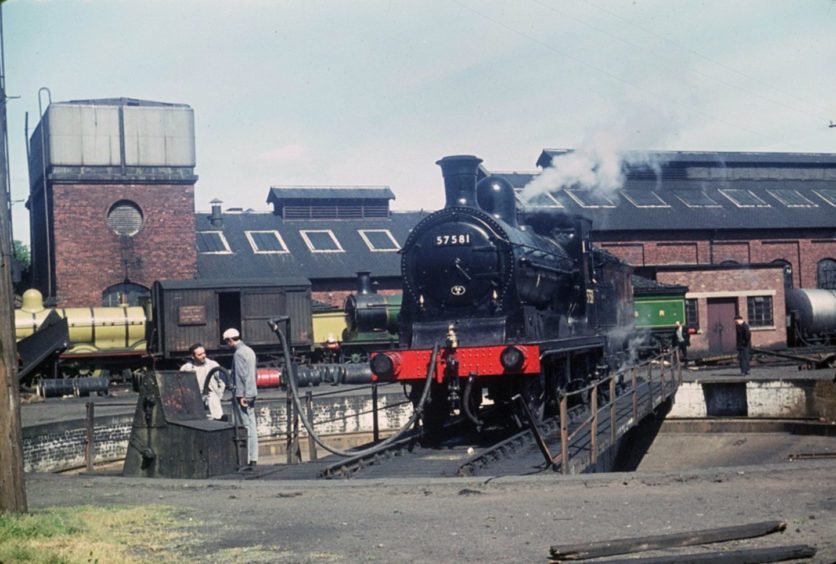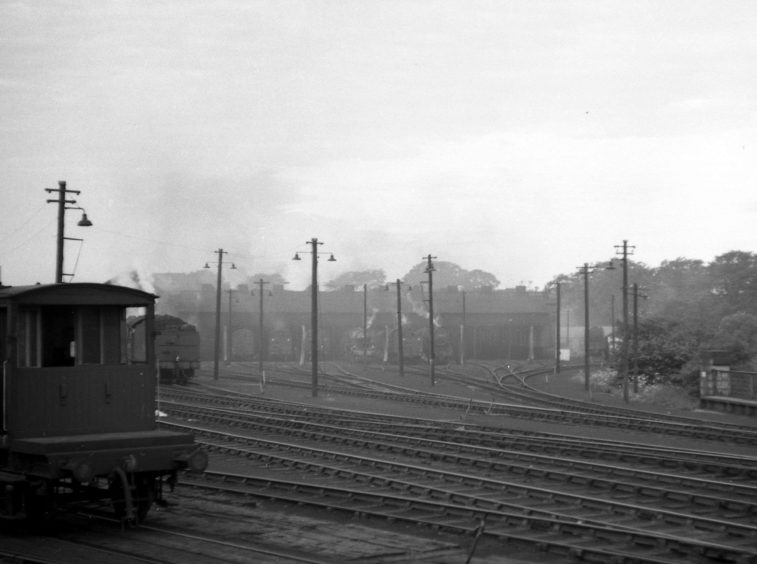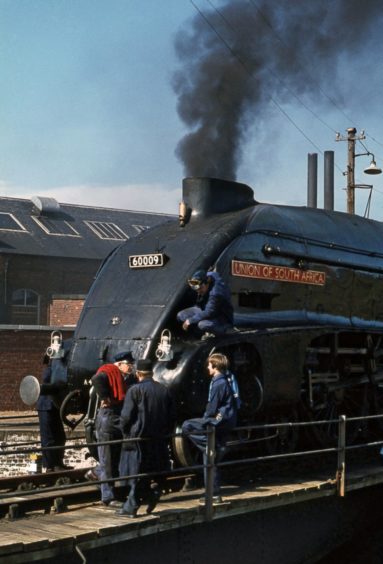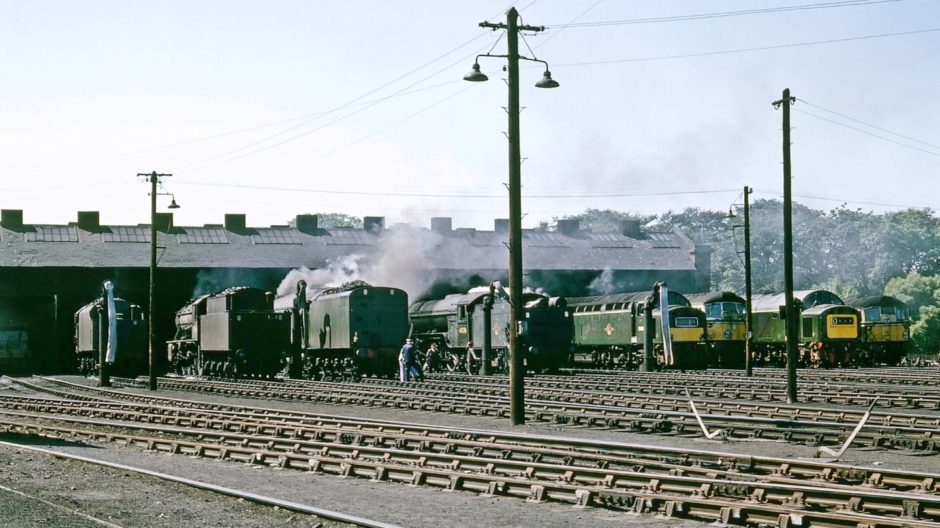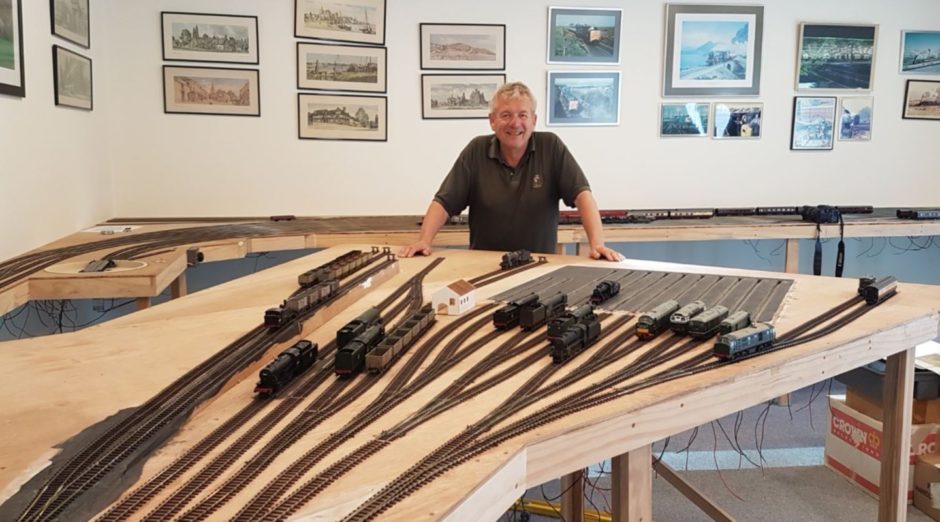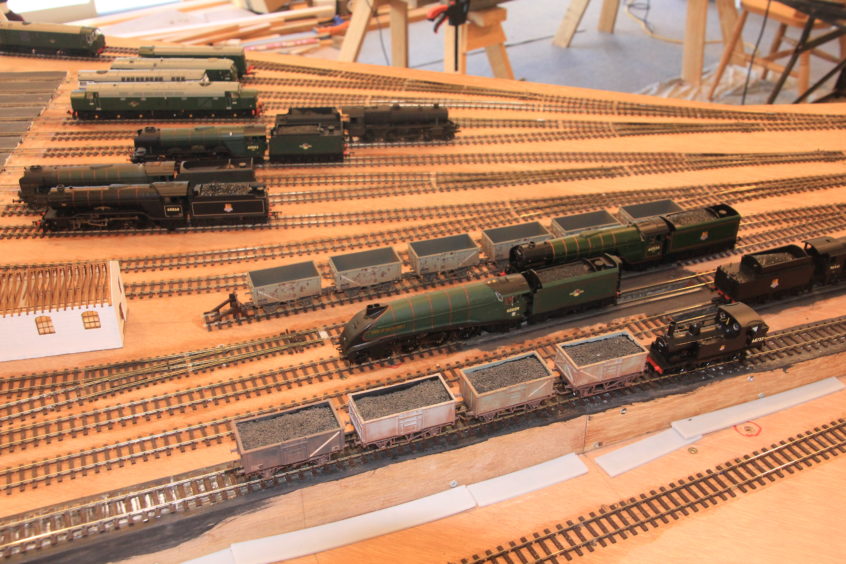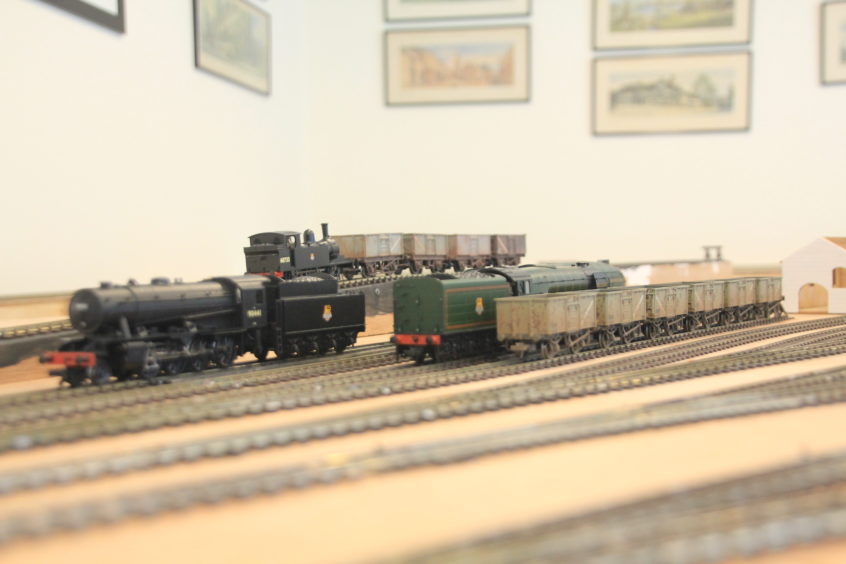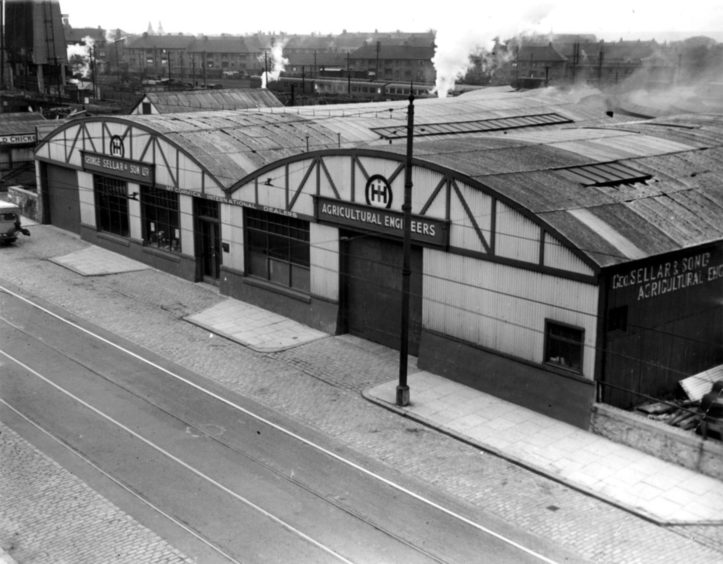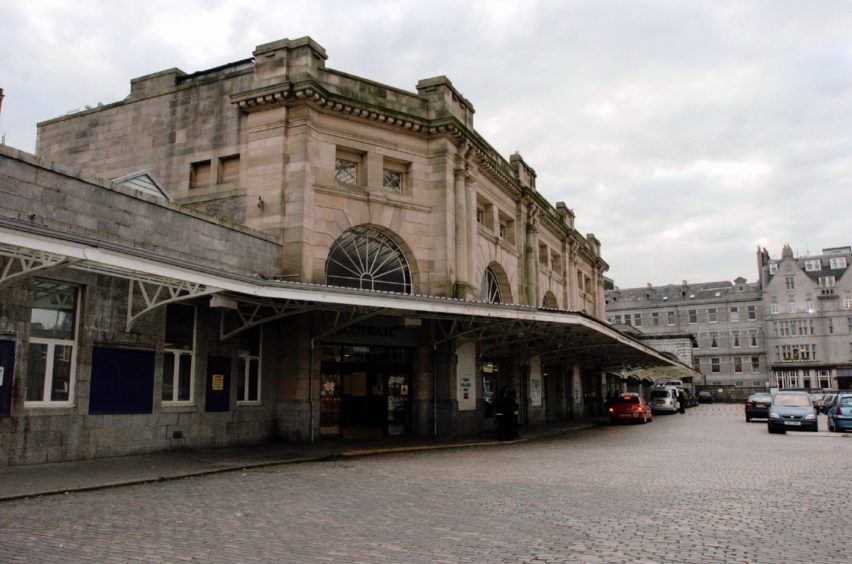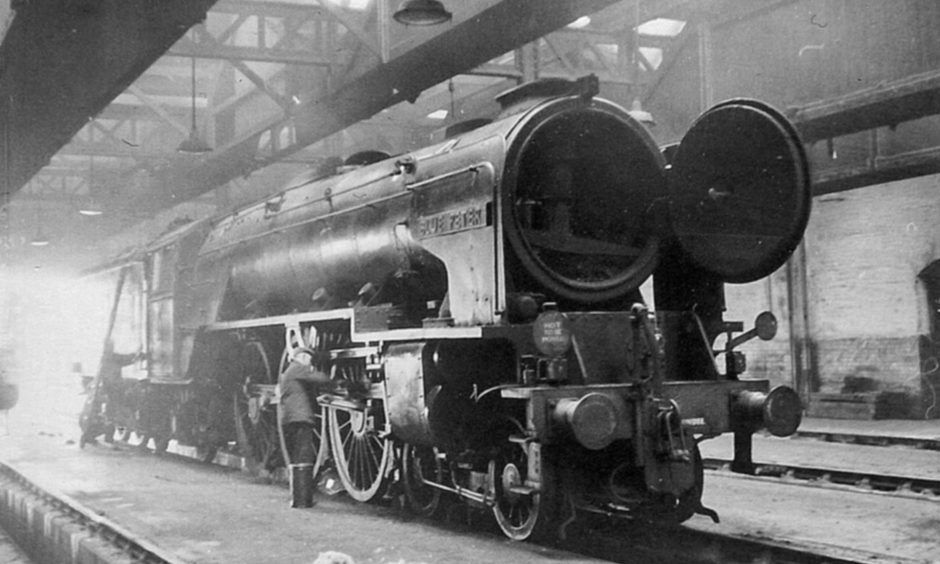
In the 1950s and 60s, the train sheds at Ferryhill in Aberdeen were alive with the sight and sounds of magnificent engines, billowing steam and smoke, full of the noise of these superb machines and the skilled men who worked on them.
The sheds – where engines were stored, repaired and maintained – are gone now, closed in the late 80s and swept away for housing.
But they are being painstakingly brought to life on the other side of the world in New Zealand by Mike Yeoman, as he pieces together his model tribute to the sheds that were a “magnet” to him as a child.
His fascination and passion, fired in the Ferryhill sheds, set him on the track to a lifelong high-flying career as a railway engineer across the UK, Hong Kong and New Zealand.
Today, his labour of love is an intricate replica of those sheds, accurate down to the last minute detail. Now Mr Yeoman, born and bred in Aberdeen, is reaching out to the Granite City for help in making sure every engine, every door, every window, every nut, every bolt, is a faithful reproduction of the place he loved so much. He is asking for others who worked at the sheds in the 50s and 60s to share their memories and photos.
His obsession with rail and glittering career – he steered the modernisation of rail and metro networks in Hong Kong and New Zealand – started with, of all things, a bus journey in 1966.
“It was when Aberdeen got the first of the front entry double-deck buses and they were a real novelty for someone of my age,” said Mr Yeoman. “So me and my friend, Doug, jumped on the number nine bus and decided we were going to go as far as the terminus. We ended up in Torry and just above the Wellington suspension bridge, if you looked down from the top of a double deck bus, you could see down into Ferryhill.
“We saw all this steam and smoke and I thought: ‘Gee whiz, we have to go and have a look at this’. I didn’t even know the place existed.”
Mr Yeoman said that as the two lads approached the sheds, there was a huge notice warning against trespassers under any circumstances.
“We just ignored it and walked in. I will never forget walking into the place and there were these massive steam locomotives. I just found it absolutely amazing.”
After that eureka moment, Mr Yeoman used to regularly cycle down to the sheds from his home in Westburn Road.
“The vast majority of the people there were really friendly, the drivers, the firemen the mechanics. The only people you had to watch out for were the supervisors, because their job was to keep people like me out. I was fortunate enough to make quite a few friends there, among the staff. If they saw that you were interested, they were quite keen to foster that interest.
“When I first went there I was 11-years-old. It was before the days of health and safety. I was crawling over piles of hot ashes in my sandals and my shorts and my school blazer. Nobody seemed to worry in those days. It probably grew my common sense a little bit as to what to do and what not to do.”
The appeal of trains and rail clearly runs deep with Mr Yeoman. And his explanation of why has a romantic ring to it.
“People have said before that the steam locomotive is probably the most alive piece of mechanical engineering that man has ever invented. Like many other people in the world, I have a fascination for these things,” he said.
It was a passion he shared with others, becoming president of the railway society at Rubislaw Academy and, in 1972, winning a British Rail sponsored competition for Scottish schools, on the theme “Railways And You”.
His prize was a tape recorder.
“That was thrashed to death,” he said. “I remember at four o’ clock in the morning listening to Joni Mitchell songs as I was studying for my degree at Robert Gordon’s Institute Of Technology. I would have been about 21 or 22 then, so it lasted a good few years.
Given his childhood passion, there was a degree of destiny about Mr Yeoman’s chosen career, joining British Rail in 1973 and working with them for 17 years, including a brief spell at his beloved Ferryhill train sheds.
After that he worked in Hong Kong.
“My last stint there was in 2010 for two years and as project manager I bought all the new trains for Hong Kong, including the 380kph ones they now run up to Guangzhou,” said Mr Yeoman.
He had another four years back in the UK with Bombardier, the country’s leading rail engineering and manufacturing company.
On his global travels, he settled in New Zealand as CEO of Alstom, which maintained all the rolling stock in the country.
“My last job was project manager for the electrification of the metro network in Auckland. I had three or four very happy years doing that, then I decided it was time to hang up my spanners.”
Mr Yeoman might have hung up his spanners, but his passion for rail and Ferryhill is undiminished. Which is why, when he bought a new home two hours north of Auckland, he made sure there was enough space for what he is calling his “railway room” dedicated to building his Ferryhill model.
“I have this burning desire to remember the place as it was, because it was flattened and is covered in housing now,” he said.
It is here the train sheds are being reborn in 00 scale – a task which has taken exhaustive research on the part of Mr Yeoman, who was a founder member of the Aberdeen Model Railway Club in the 1970s.
“I have pulled in several hundred photographs I have found on the web of Ferryhill in the 50s and 60s. I also managed to get a 1953 Ordnance Survey map online and I’m copying that and it’s all more or less to scale. I also got copies of the original drawings from the Caledonian Railway Society in Glasgow of the shed when it was built in 1907.
“The model is very detailed. The shed buildings aren’t up yet but I’m working with a guy down in Christchurch who has a 3D CAD machine and does laser-cutting and 3D printing, so this thing is going to be very realistic. As realistic as I can make it.”
Is there not a degree of poetry in the recreation of long-gone train sheds from the golden age of steam using cutting-edge 21st century technology?
“I take the point,” said Mr Yeoman, laughing. “But as an engineer I can’t take that out of me. I’ll take advantage of all the modern facilities available to me. And the locomotive models you can get now are stunning compared to the ones we got in the 70s.”
Mr Yeoman said he has had unstinting advice and information in in his research from friends in the Great North of Scotland Railway Association – Keith Jones, Mike Cooper and Keith Fenwick – as well as Jim Summers from the Caledonian Society, and Jon Tyler from the Ferryhill Trust.
But he needs more help still and is reaching out to folk in the Granite City.
“Although I’ve managed to get masses of pictures of the locomotives and the front of the shed, I haven’t got any photographs of the south side of the shed. That’s the entrance, the offices, the stores and all that side of it. I’ve managed to pick up from the Scottish Records Office some 1947 aerial views taken by the RAF, they are not as clear and don’t show the detail I need.
“So I am keen to get pictures of the south side where the offices were, as I have nothing to help me with that at all,” he said, hoping ex-Ferryhill workers and others might be able to help.
Mr Yeoman’s model doesn’t just involve the Ferryhill sheds. It also includes shunting yards, which he has dubbed Craigiebrewster, as an amalgam of Craiginches and Kittybrewster.
“I will finish the guts of it in two to three years, but there is going to be a massive amount of detail to add,” he said. “I am also going to, at some stage, include a model of Aberdeen Station if I can, but that’s a big job.”
Mr Yeoman is hoping to take a break from his labours for a return to Scotland for his nephew’s wedding next spring, coronavirus allowing. But not a complete break.
“I’m planning to spend eight weeks in Edinburgh, going through the Scottish Records Office pulling together as much information as I can on the 50s and 60s at Ferryhill with the objective of maybe writing a book, trying to note down the history of the place.”
If you have any photos or can help Mr Yeoman with his recreation of the Ferryhill train sheds, you can contact him at mr.mahoose@gmail.com
